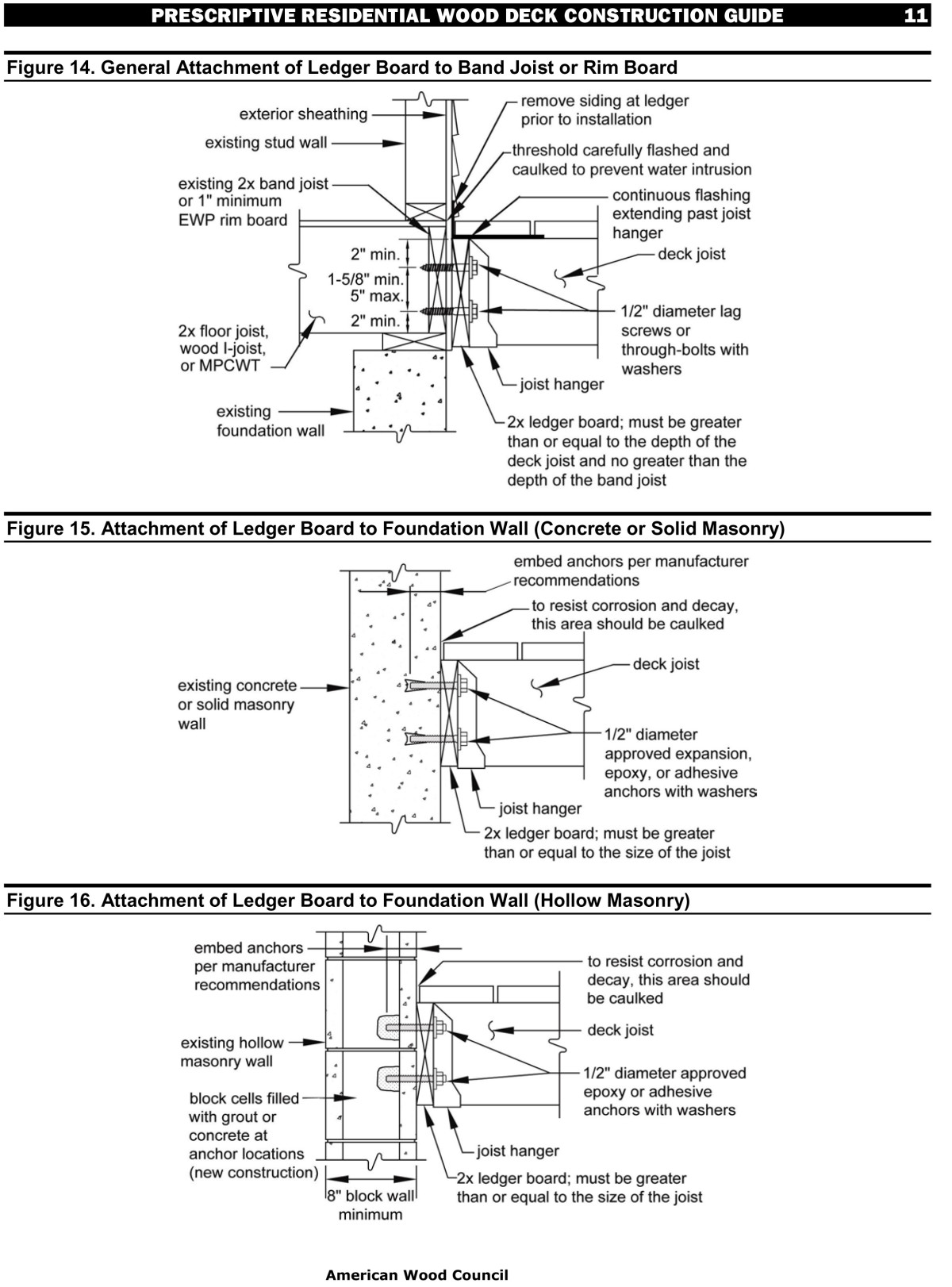
Here in New England, it’s common practice to set decks a step down from the house’s floor to keep snow from piling up against the door, melting, and leaking in. That’s becoming a lot harder to do. Newer editions of the IRC, and the commonly used alternative deck code, the DCA6-15, strictly limit the placement of the lag bolts used to fasten deck ledgers. The bolts must be no closer than 2 in. to the top of the ledger or the bottom of the band joist. That makes it nearly impossible to drop the ledger more than a couple of inches. The specifics are fairly complicated, but Fine Homebuilding contributor Glenn Mathewson explains this well.
And while I love how fast and easy the newer proprietary structural screws are to use compared to lags, the come with similar limitations. For example, I installed a deck ledger today using Simpson’s SDWS screws. They must be installed no closer than 1 1/2 in. to the edges of either the ledger or the rim joist, and they can’t be driven into the mudsill. Additionally, staggered rows of screws must be used, and they must be kept at least 1 1/2 in. apart. With the 2×10 construction of both the house and the deck I was working on, that works out to a maximum step down of 4 1/2 in.
But, that’s how the codes and standards are written, and you should be aware. Some alternatives exist. For example, the DCA6-15 has details for attaching ledgers to concrete or masonry. Although there’s no hybrid detail in the code, I’d guess that many building inspectors would accept the top of the ledger being bolted to the house’s band joist and the bottom being affixed with wedge or chemical anchors to the foundation. Or, you might be able to anchor a 2×12 ledger to the foundation so that its top is higher than the mudsill to provide a step down.
You could also build a free-standing deck where there’s no ledger connection, so the elevation can be whatever you want relative to the house floor. Or, you could have an engineer design a ledger connection that allows a step down.
Fine Homebuilding Recommended Products
Fine Homebuilding receives a commission for items purchased through links on this site, including Amazon Associates and other affiliate advertising programs.

Handy Heat Gun

Affordable IR Camera

8067 All-Weather Flashing Tape




























View Comments
You'll find more information on the ledger to house rim joist fastener orientation and ledger drop in this Fine Homebuilding blog post:
https://www.finehomebuilding.com/item/25467/deck-ledger-bolting-patterns-limit-house-to-deck-level-drop
Andy,
Simpson Strongtie SDWS and SDWH screws as well as FastenMaster LedgerLok screws can indeed be driven directly into the center of the mudsill or wall top plates. Though you won't find the details for mounting ledger screws directly into a mudsill in the manufacturers' instructions, I have spoken with technical reps from both companies to confirm the practice is acceptable.
Structural screws are my go-to solution for mounting deck ledgers primarily because I can continue to drop my ledger boards one step down from the interior floor level.
Screws from both companies must be driven into the center of the mudsill or top plate so accurate placement is important. Simpson Strongtie doesn't require pilot holes when driving their screws into a mudsill or plate but FastenMaster does. For LedgerLOK screws, pilot a 3/16 in. hole into the mudsill or plate. This hole will reduce the chance the mudsill or plate will split.
I show the process in these Fine Homebuilding videos:
https://www.finehomebuilding.com/how-to/video/build-a-deck-layout.aspx
https://www.finehomebuilding.com/how-to/video/build-a-deck-install-ledger.aspx
For more information, contact the companies directly.